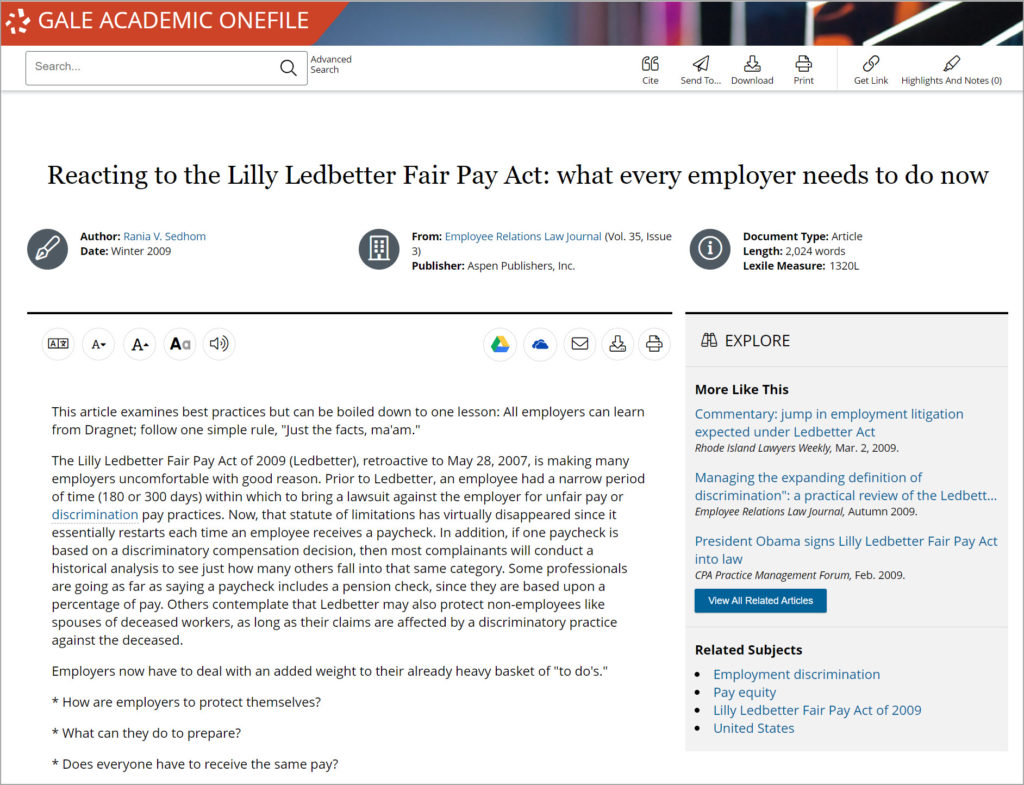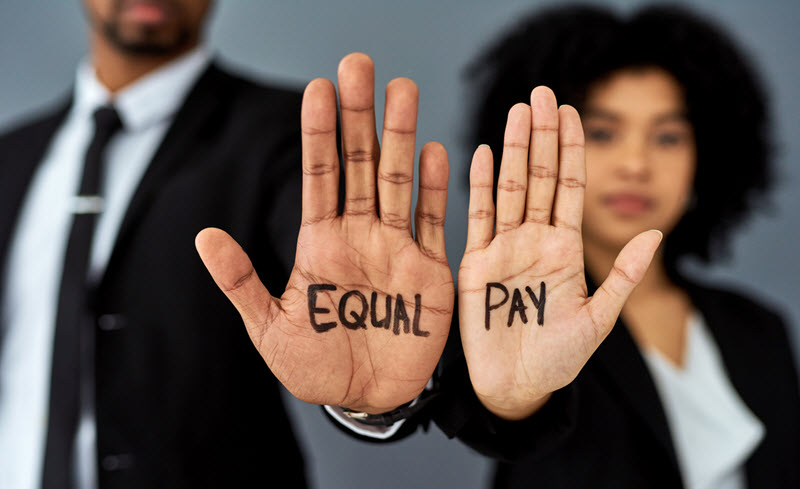| By Gale Staff |
This year, Equal Pay Day falls on Wednesday, March 15. No matter the discipline, whether women or gender studies, history, sociology, philosophy, law, or economics, there’s good reason to engage students in the history and progress of this national observance. Undergraduates may not have yet participated in the workforce, but most of us know that incomes are not always equal. Different expertise, demand, unions, and labor laws all impact why certain occupations earn higher salaries than others. However, race and gender also unfairly affect these income disparities.
According to the 2020 census, for individuals holding the same job, women, on average, make 82 cents for every dollar their male counterparts earn. This might not seem like such a huge difference, but consider this in terms of an annual salary. While a man earns $70k a year, a woman performing the same role would only earn $57k. That 18 cents disparity adds up quickly when dealing with tens of thousands of dollars.
This discrepancy is not the result of one particular problem. It is a complicated issue that involves gender bias, culture, and privilege. For this kind of sensitive research, you can always rely on Gale’s vetted databases. Gale Academic OneFile, in particular, features a considerable collection of curated articles that relate to equal pay legislation and the sociological considerations that make up the gender gap.
Discover the History Behind Equal Pay Among Women
While unequal pay no doubt preceded the 19th century, it was in the 1860s that Susan B. Anthony famously demanded “equal pay for equal work.” It took the momentum of the Civil Rights Movement to finally codify equal pay, and John F. Kennedy signed the Equal Pay Act in 1963. However, there were still exceptions to the law, and many continued to push back on expanding the legislation. Wage laws stagnated somewhat through the 1980s and 1990s, but the issue once again saw momentum with the 2009 Lilly Ledbetter Fair Pay Act.

With so many powerful moments and movements to consider, it’s impossible to grasp the reasons for the modern-day pay gap without understanding the history behind the problem. Gale Academic OneFile stores decades’ worth of articles so your students can read perspectives from 1980s activists or an in-depth explanation of the Equal Pay Act.
Help Researchers Develop a High-Level Understanding of the Subject
Many people actively seek solutions to the gender gap, whether raising awareness or drafting legislation. The National Committee on Pay Equity (NCPE) first celebrated Equal Pay Day in 1996 to bring attention to the wage inequality between men and women. The NCPE hopes to help the public understand the severity of the issue. It’s more than money — by systematically earning less, women are more likely to live in poverty. People living in poverty are statistically more at risk of negative physical and mental health conditions, with higher rates of mortality.
To begin their research, guide students toward the more high-level outlines housed in Gale Academic OneFile. While Gale Academic OneFile provides thousands of different results, it always helps to start with a summary that describes the main variables that influence the gender pay gap. The topic of equal pay is hardly simple, so your students must build a solid understanding of the basics before diving into more intricate research.

Emphasize Real Solutions
While the 2020 census results regarding unequal pay are concerning, there has been some improvement. In 1980, women earned just 64 cents for every dollar that men earned compared to 82 cents today. So while not perfectly equal, there have been some positive outcomes. Encourage students to pursue wins in modern-day equal pay litigation. Or, allow them to consider how some countries are more successful in ensuring gender-equal incomes. Using the peer-reviewed resources and expert opinions found in Gale Academic OneFile, have students discuss what actions and policy changes might positively impact the wage gap. Study new ideas and successful trends that employers could initiate, such as income transparency.
Help improve the quality of your equal pay research and the information that your students access. With Gale Academic OneFile, you can feel confident in the accuracy and neutrality of your search results.
If your academic institution isn’t already a subscriber, learn more about Gale Academic OneFile today!

